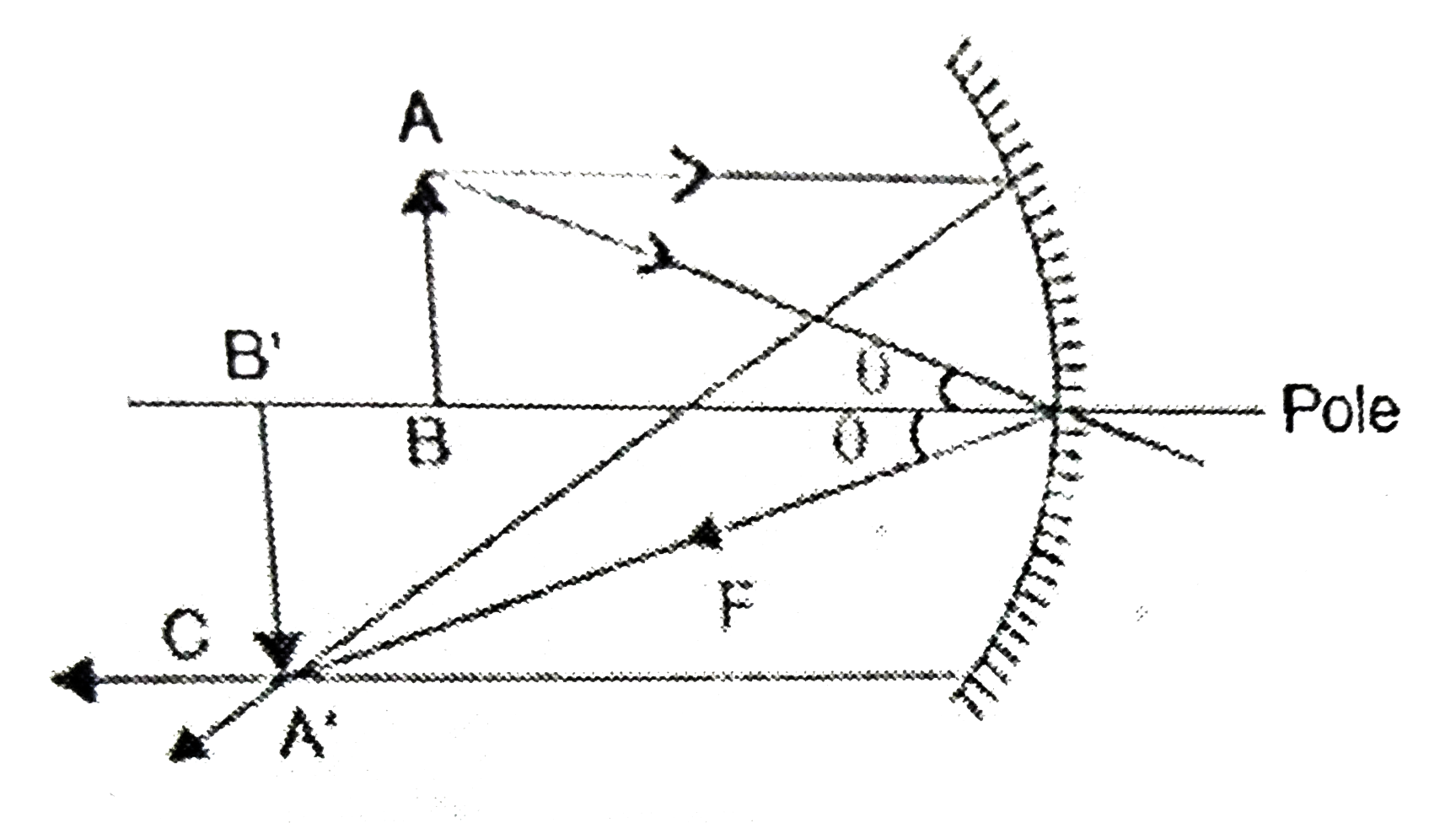(a) Draw a ray diagram to show image fromation when the concave mirror produces a real, inverted and magnified image of the object
(b) Obtain the mirror formula and write the expression for the liner magnification.
(c) Explain two advantages of a reflecting telescope over a refracting telescope.

(b) and MPF are similar
So,
and are similar
Equate (ii) and (iii)
Form equation (ii),
(c) (i) Reflecting telescope have higher resolving power due to the large aperture of mirror.
(ii) Due to availability of paraboloidal mirror the image is free from chromatic and spherical aberration.

Similar Questions
(a) With the help pf a ray diagram , show how a concave mirror is used to obtain an erect and magnified image of an object .
(b) Using the ray diagram below , obtain the mirror formula and the expression for linear magnification.View SolutionWhere should the object be kept if a concave mirror has to form a real, inverted, and highly magnified image?
View SolutionDraw a labelled ray diagram of a refracting telescope. Define its magnifying power and write the expression for it.
Write two important limitations of a refracting telescope over a reflecting type telescope.View SolutionState two positions in which a concave mirror produces a magnified image of a given object. List two difference between the two images.
View SolutionA concave mirror produces three times magnified real image of an object placed at 10 cm in front of it. Where is the image located ?
View SolutionDraw a ray diagram showing the formation of image of a point object by a plane mirror.
View SolutionDraw a ray diagram to show the formation of image by a concave mirror for an object placed between its pole and focus. State three characteristics of the image.
 View Solution
View SolutionDraw ray diagrams showing the image formation by a convex mirror when an object is placed
(a) at infinity (b) at finite distance from the mirrorView SolutionDraw a ray diagram to show the formation of image by a concave mirror for an object beyond its centre of curvature. State three characteristics of the image.
View Solution(a) Draw a ray diagram showing the image formation by a compound microscope. Hence obtain expression for total magnification when the image is formed at infinity.
View Solution

